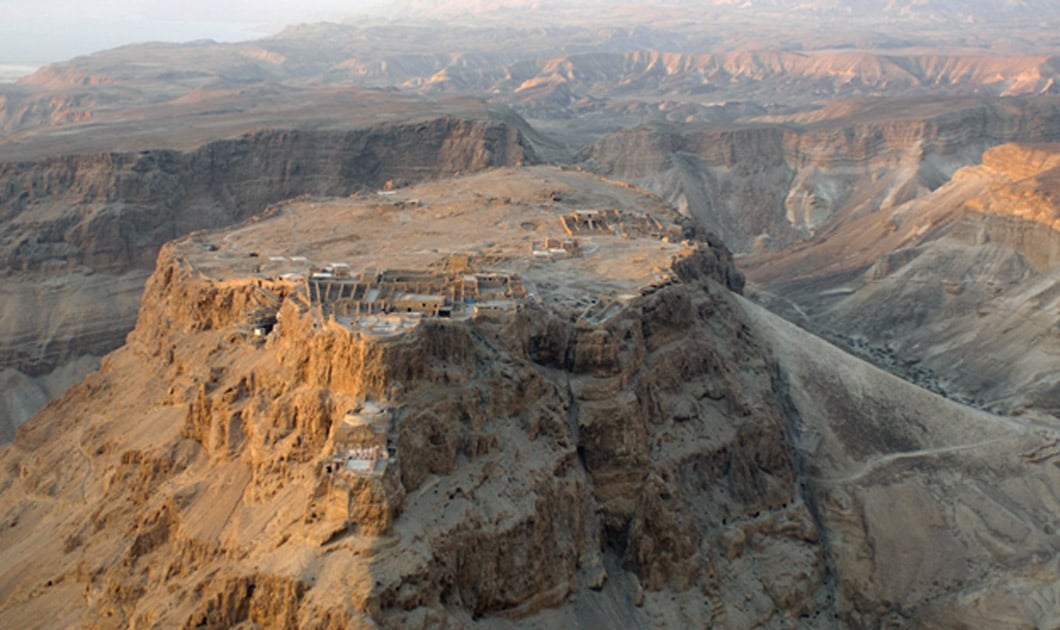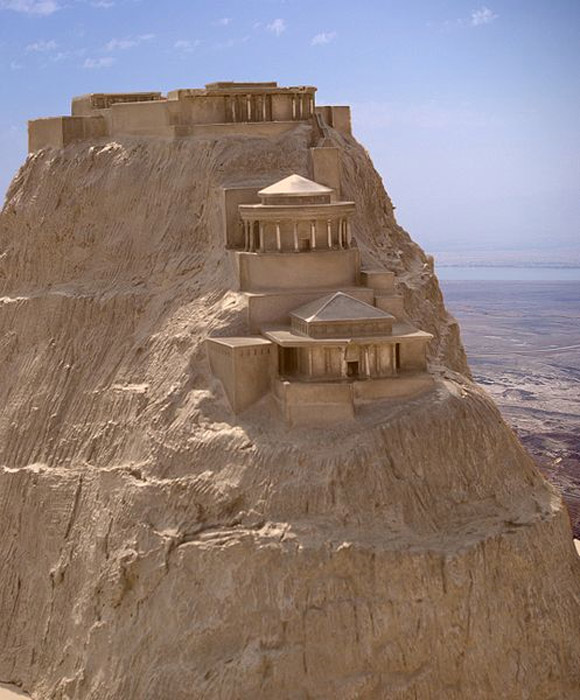A team of archaeologists from Tel Aviv University have returned to Masada in Israel, after a 11-year hiatus, in order to excavate previously unexplored areas of the desert mountain fortress, including a mysterious underground structure. Once a pleasure palace for Herod the Great, Masada is most well-known for the deaths of around 960 Jewish rebels and their families in 74 AD, who chose to commit suicide rather than be captured or slaughtered by the Romans.

Fresh Explorations of an Ancient Treasure
For the first time since 2006, a Tel Aviv University team, headed by Roman-period archaeologist Guy Stiebel, have launched new excavations at the UNESCO World Heritage Site, examining previously untouched areas of the legendary desert mountain fortress. “This is the next generation,” Stiebel told The Times of Israel, adding that his team plan to excavate new sections of the Jewish rebel dwellings, as well as a garden constructed by Herod, “Our intention is to further explore a mysterious underground structure that was detected in the earliest (1924) aerial photographs of the site. The building has remained hitherto unexplored.”
Dr Stiebel did not add any further information about the underground structure and what it may have been used for. But it is possible that it was used as a hideout or escape route during the Siege of Masada.
Dr. Stiebel expressed his excitement to return to the site after an eleven-year absence in his statements to i24news, “A lifetime would not suffice to get a glimpse of all the hidden beauties of Masada. Its magic is not just in the military equipment, it is also in small things.” Even though several experts believe that more than 95% of Masada’s potential has already been exploited, Stiebel believe that its core is yet to be discovered, including the mysterious underground structure that lies there and is waiting to be closely explored.

A model of the northern palace as Masada ( public domain )
The Dramatic History of the Desert Fortress of Masada
The ancient fortress of Masada stands on the eastern edge of the Judean Desert. With a sheer drop of more than 400 meters to the western shore of the Dead Sea, the view from the top of the plateau would have been breath-taking. Yet, the silence of the ruins belies one of the most interesting episodes in Jewish history.
While the first structures on Masada were apparently built by the Hasmonaean king, Alexander Jannaeus in the early 1st century BC, most of the structures were constructed by Herod the Great during the latter half of that century. Having conquered Masada in 42 BC, Masada became a safe refuge for Herod and his family during their long struggle for power in Israel. Apart from being a fortress, Masada was also a pleasure palace for Herod. For instance, it was designed along the lines of a Roman villa, and several amphorae found in Masada’s storerooms had Latin inscriptions, indicating that they contained wine imported all the way from Italy. After the death of Herod in 4 BC, Masada became a military outpost, and housed a Roman garrison, presumably of auxiliary forces.

A Roman siege ramp seen from above ( CC by SA 3.0 )
In 66 AD, the first Jewish Revolt broke out. The most comprehensive record of this record can be found in Flavius Josephus’ The Jewish War. According to Josephus, a group of Jewish zealots, the Sicarii succeeded in seizing Masada from the Romans in the winter of 66 AD. After the fall of Jerusalem in 70 AD, Masada was filled up with refugees who escaped and were determined to continue the struggle against the Romans. Hence, Masada became a base for their raiding operations for the following two years. In the winter of 73/74 AD, the governor of Judaea, Flavius Silva, decided to conquer Masada and crush the resistance once and for all. According to Josephus Flavius, the only historical source for the battle, the Jewish rebels committed mass suicide before Roman troops stormed the battlements, even though many historians and archaeologists have challenged the historicity of that account.
“Next Generation” Excavation Begins
The first excavations in the area took place in the period from 1963 to 1965 under former IDF chief of staff and archaeologist Yigal Yadin. The dry desert climate allowed the preservation of classy frescoes and organic remains belonging to the Jewish rebels who holed up on the mountaintop. The archaeological team will be posting updates and photos from the site on its Facebook page .
Sources:ancient-origins.net








